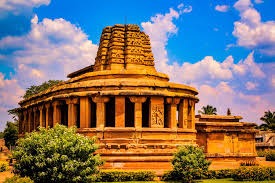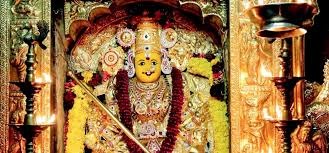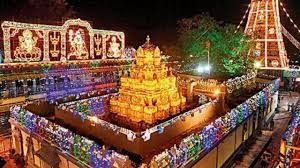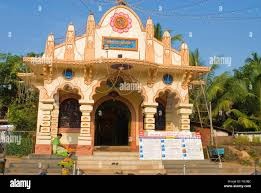Unveiling the Splendor of Durga Temple: A Spiritual Sanctuary
Nestled in the heart of ancient and culturally rich locales across India, the Durga Temple stands as a beacon of divine energy, artistic brilliance, and spiritual significance. Dedicated to Goddess Durga, the embodiment of power and protection, these temples are more than just places of worship; they are vibrant centers of cultural heritage and devotion.
The Essence of Durga Temple
The Durga Temple is dedicated to Goddess Durga, one of the most revered deities in Hinduism. She is often depicted as a fierce warrior with multiple arms, riding a lion and wielding various weapons. Durga represents the divine feminine power that protects the universe from evil forces and restores cosmic order. The temples dedicated to her are not only architectural marvels but also spiritual havens where devotees come to seek her blessings and protection.
Architectural Elegance
The architectural style of Durga Temples varies across regions, reflecting the diverse cultural influences of India. However, common features often include intricate carvings, majestic sculptures, and vibrant murals depicting the goddess's various forms and exploits.
North Indian Durga Temples
In North India, Durga Temples often exhibit elaborate Shikhara (spire) architecture, with intricate carvings and vibrant frescoes. The Vaishno Devi Temple in Jammu, though primarily dedicated to Goddess Vaishno Devi, also honors Goddess Durga and attracts millions of pilgrims annually. Similarly, the Durga Temple in Varanasi, one of the oldest, is renowned for its vibrant red facade and rich historical significance.
South Indian Durga Temples
In South India, the Durga Temples are known for their Dravidian architecture, characterized by towering gopurams (gateway towers) and ornate pillared halls. The Mysore Dasara Festival at the Chamundeshwari Temple, dedicated to Goddess Durga, is a grand celebration that highlights the rich cultural traditions of the region.
Cultural and Religious Significance
Durga Temples hold immense cultural and religious significance. They are central to the celebration of various festivals, particularly Navaratri, a nine-night festival dedicated to Goddess Durga. During Navaratri, devotees engage in fasting, prayer, dance, and elaborate rituals to honor the goddess and seek her blessings. The festival culminates in Dussehra, which celebrates the victory of good over evil, symbolized by Goddess Durga’s triumph over the demon Mahishasura.
The Durga Temple Experience
Visiting a Durga Temple is a deeply enriching experience. The temple ambiance, filled with the fragrance of incense and the sound of devotional hymns, creates an atmosphere of peace and reverence. Key elements of the Durga Temple experience include:
-
Darshan (Viewing the Deity): Devotees often queue to have a glimpse of the goddess’s idol, which is usually adorned with flowers, jewelry, and elaborate garments.
-
Aarti (Ceremonial Worship): The temple conducts aarti, a ritual involving the waving of a lit lamp before the deity while singing hymns. It’s a visually captivating and spiritually uplifting experience.
-
Prasad (Sacred Offerings): After worship, devotees receive prasad, blessed food offerings from the deity, which is distributed among the visitors.
Exploring Nearby Attractions
While visiting a Durga Temple, you may also want to explore nearby attractions to enrich your journey. Many Durga Temples are situated in historically and culturally significant areas, offering additional places of interest:
-
Historical Monuments: Nearby ancient forts, palaces, and ruins often add a historical context to your visit.
-
Local Markets: Many temples are located near bustling markets where you can purchase local handicrafts, religious artifacts, and traditional sweets.
-
Natural Beauty: Some Durga Temples are set against scenic backdrops, such as hills or rivers, providing opportunities for relaxation and reflection.
Practical Tips for Visitors
-
Best Time to Visit: Temples are typically more crowded during festivals like Navaratri and Dussehra. Visiting during off-peak times can provide a more serene experience.
-
Dress Code: Wear modest clothing that covers shoulders and knees, as many temples have specific dress codes.
-
Respect Local Customs: Follow temple rules and respect local customs, such as removing shoes before entering the main worship area.
-
Engage with Locals: Interacting with temple priests and local devotees can provide deeper insights into the temple’s significance and the rituals performed.
Conclusion
The Durga Temple is not merely a place of worship; it is a sanctuary of peace, a repository of rich cultural heritage, and a testament to the enduring reverence for Goddess Durga. Whether you are a devotee seeking spiritual solace or a traveler exploring India’s architectural and cultural treasures, a visit to a Durga Temple promises an unforgettable experience steeped in tradition, devotion, and artistic grandeur.







